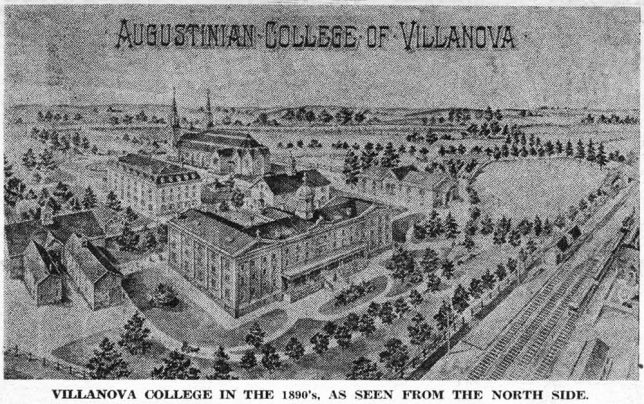One of the most interesting old church edifices in the general vicinity of Wayne is the Gulph Christian Church, located at the intersection of Matson Ford and Old Gulph roads, in Gulph Mills. Standing slightly back from roads that are now traversed by a constant stream of noisy automobile traffic the church, in its quiet dignity, is reminiscent of a far different period. Its history begins 127 years ago when, in 1830, a minister of the Christian denomination from Philadelphia, Elder Frederick Plummer, began preaching at Gulph Mills.
For the following facts concerning the subsequent history of this old church, the writer is indebted to Mrs. A. Irvin Supplee, who prepared a history of it on the commemoration of the 120th anniversary, in July, 1953. This history is filed with the Montgomery County Historical Society records, located in the Society’s building in Norristown. Mrs. Supplee, the former Miss Regina Stiteler, of Gulph Mills, now makes her home in Conshohocken.
According to Mrs. Supplee, there was at first no church in which to hold services. There was a small, one-story school building, where Elder Plummer started to preach on Sundays. For these services he was driven, by horse and buggy, from his home in Philadelphia by George Righter, a resident of Gulph Mills. However, it was not long before the small schoolhouse was so overcrowded by an eager congregation that the services had to be held under the shelter of a large oak tree in the school yard.
During the next two or three years the visits of the Philadelphia minister to his schoolhouse congregation were not regular, but old records show that on June 16, a number of persons were baptized in the Schuylkill River. Among them were Isaac DeHaven, Andrew Supplee, John Henderson Supplee, George Supplee, Jacob Rodenbaugh (who later became pastor of the church), John Sutton (who became a travelling preacher), William S. Wagner, Elizabeth Matson, Sr., Jane Zell, Eliza Supplee, Mary Ann Supplee, Susanna Smith and Jane Matson.
On June 23, William Noblitt was baptized in the river. It was on the afternoon of that day that the church was organized, with 24 members, at a meeting held in the schoolyard, and on November 15 officers were appointed at a special meeting, held at the home of Andrew Supplee.
These officers included William S. Wagner, secretary, and George Righter, treasurer. Deacons were Jacob Rodenbaugh, Andrew Supplee and Isaac DeHaven, while deaconesses were Elizabeth Supplee, Susan J. Wagner and Mary Ann Supplee.
In making her search through the old church archives, Mrs. Irvin Supplee finds records of other baptisms in the Schuylkill River in August, September, October, November and even on December 25, of 1833. And those “who had the faith and courage to be baptized out of doors on Christmas Day,” Mrs. Supplee feels, deserve to have their names mentioned, even this many years later: Edward Parker, Jesse Dickey, Mary Parker, Elmira Righter (Broades), Ann Horn, Elizabeth Matson, Jr., and Ann Jones.
In all, some 63 persons were baptized during Elder Plummer’s pastorate, which is indeed a notable record, considering the severity of the temperatures on some occasions. According to these same old records, there were also many special meetings, some lasting from two to four days.
On October 14, 1834, the members of the church, with “a respectable number of the neighbors, met at the Gulph School House to make up a sum of money to purchase a piece of ground whereon to erect a church.” After the necessary money was found, a deed to the property was secured and the church was built. According to the old records this was called “The Christian Church in Upper Merion, Montgomery County, Pennsylvania,” and was dedicated “to the service of God in the year of our Lord 1835.”
(to be concluded)

